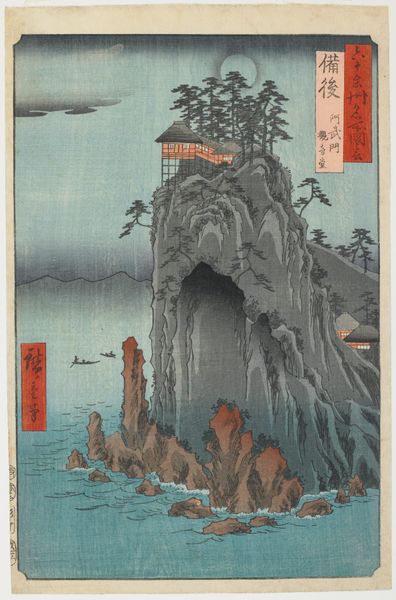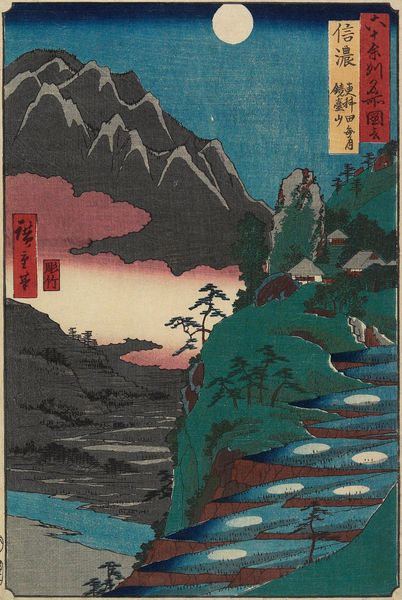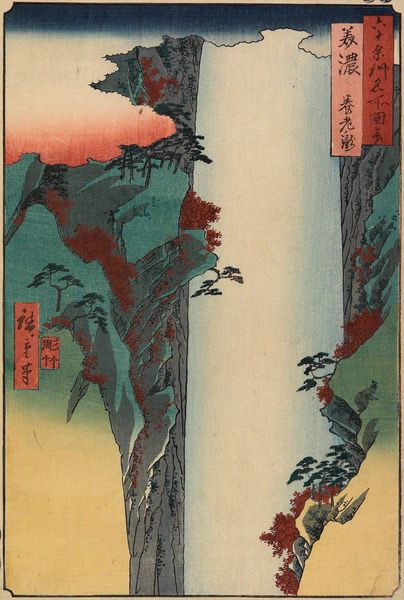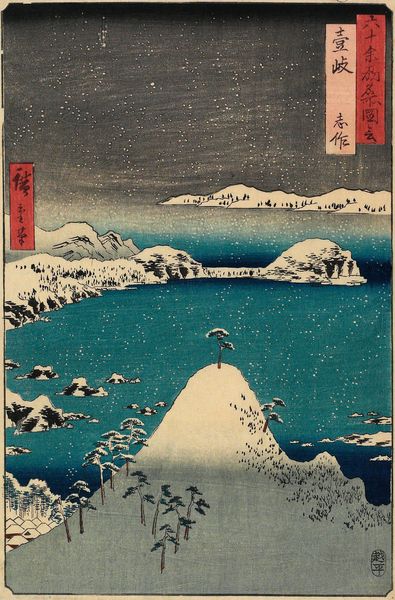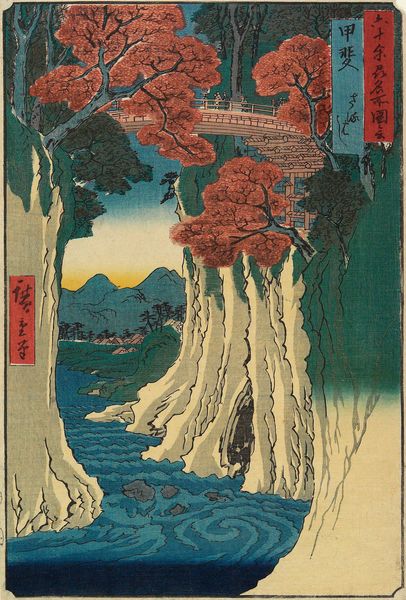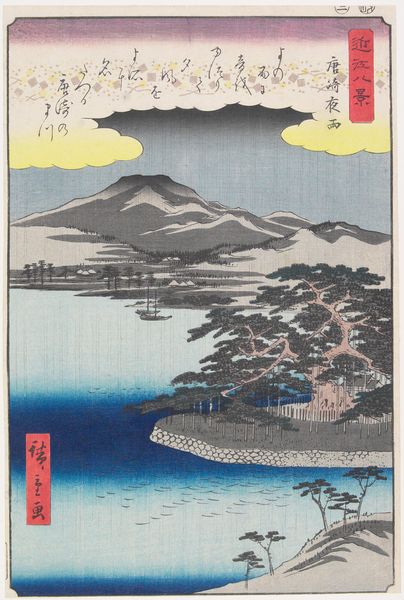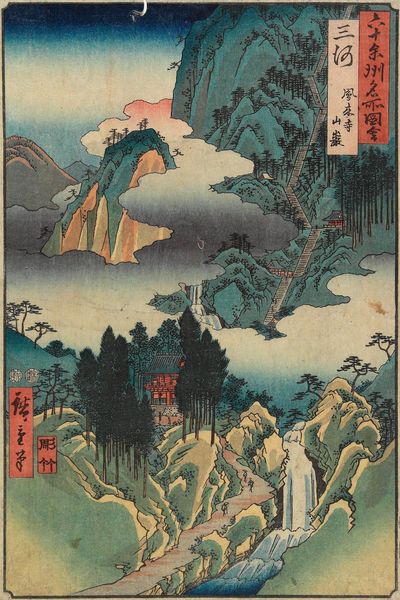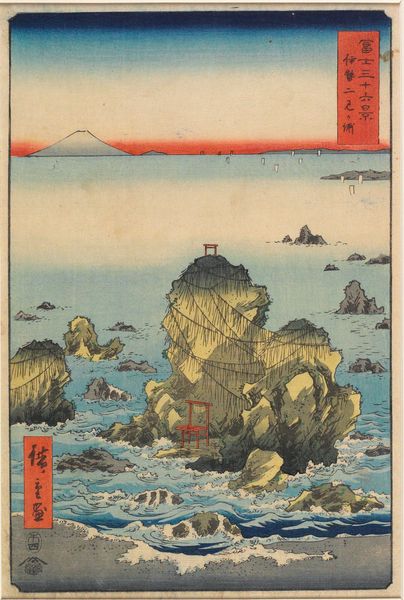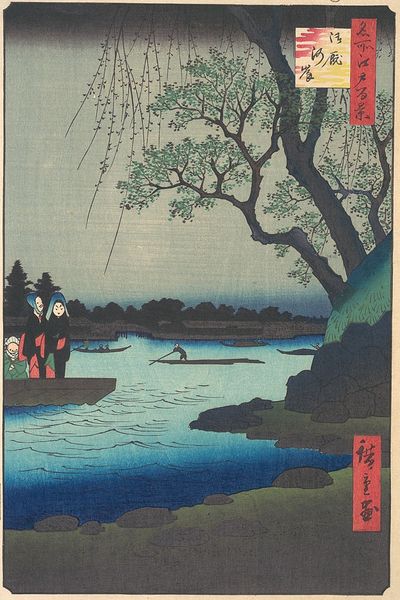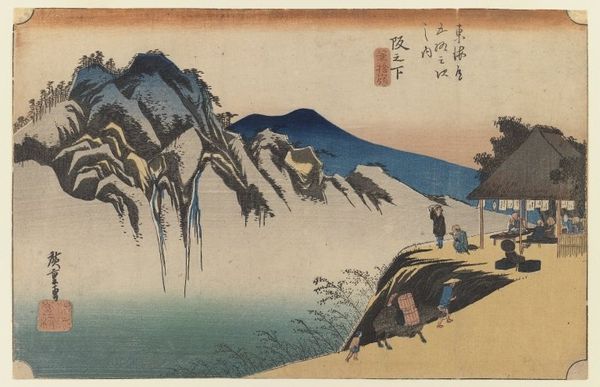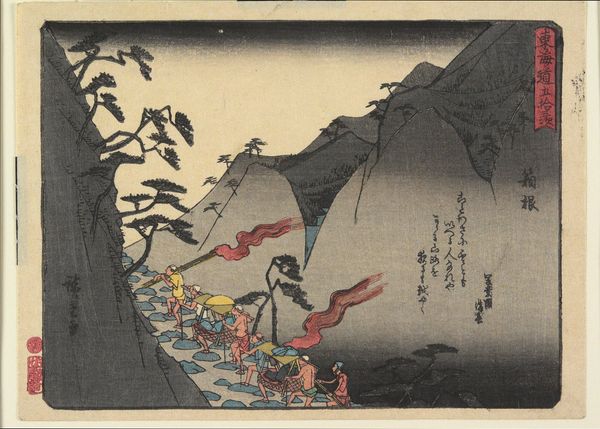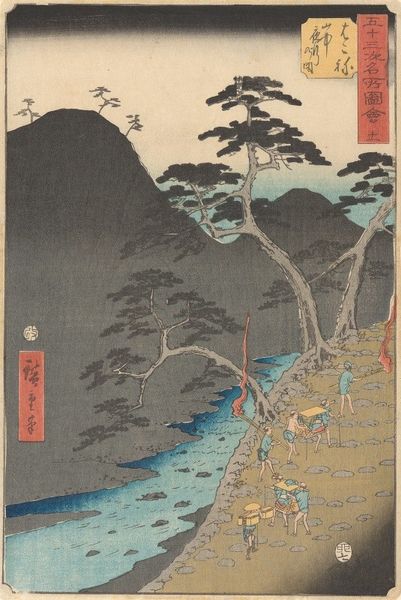
print, ink, woodblock-print
# print
#
asian-art
#
landscape
#
ukiyo-e
#
ink
#
woodblock-print
#
geometric
Dimensions: 13 3/16 × 8 7/8 in. (33.5 × 22.5 cm) (image, vertical ōban)
Copyright: Public Domain
Editor: This is Utagawa Hiroshige's "Kannon Temple at Abumon," likely from 1853, made with ink and woodblock print. The blue is so striking; it feels almost like twilight. I’m curious about the composition. How do you interpret this work? Curator: Let us analyze the formal elements. Observe the stark contrast between the dark, monolithic rock formation and the lighter sky. Notice the verticality—the composition draws the eye upwards towards the temple. The lines, particularly those delineating the rock face, are quite graphic, wouldn't you agree? How does that affect your perception? Editor: I do see the bold lines; they create depth. The temple, almost perched precariously, is balanced by the boats down below. It creates this sense of rising or ascending, doesn’t it? Curator: Precisely. Now, consider the use of geometric shapes: the rectangular temple contrasts with the organic forms of the rock and the sea. What effect do these shapes produce on the viewer's understanding of space within the piece? Editor: It’s a little unsettling. It feels very intentional though, like the architecture against nature's grandness is communicating something. Curator: Perhaps. Look again; notice the lack of aerial perspective. This flattening contributes to the overall design rather than a mimetic depiction of a real space. The composition dictates our understanding, not the illusion of reality. Editor: That's really insightful. I was caught up in the 'what' rather than the 'how'. Thanks! Curator: My pleasure. It is through dissecting form and structure we glean its artistic achievement.
Comments
No comments
Be the first to comment and join the conversation on the ultimate creative platform.
